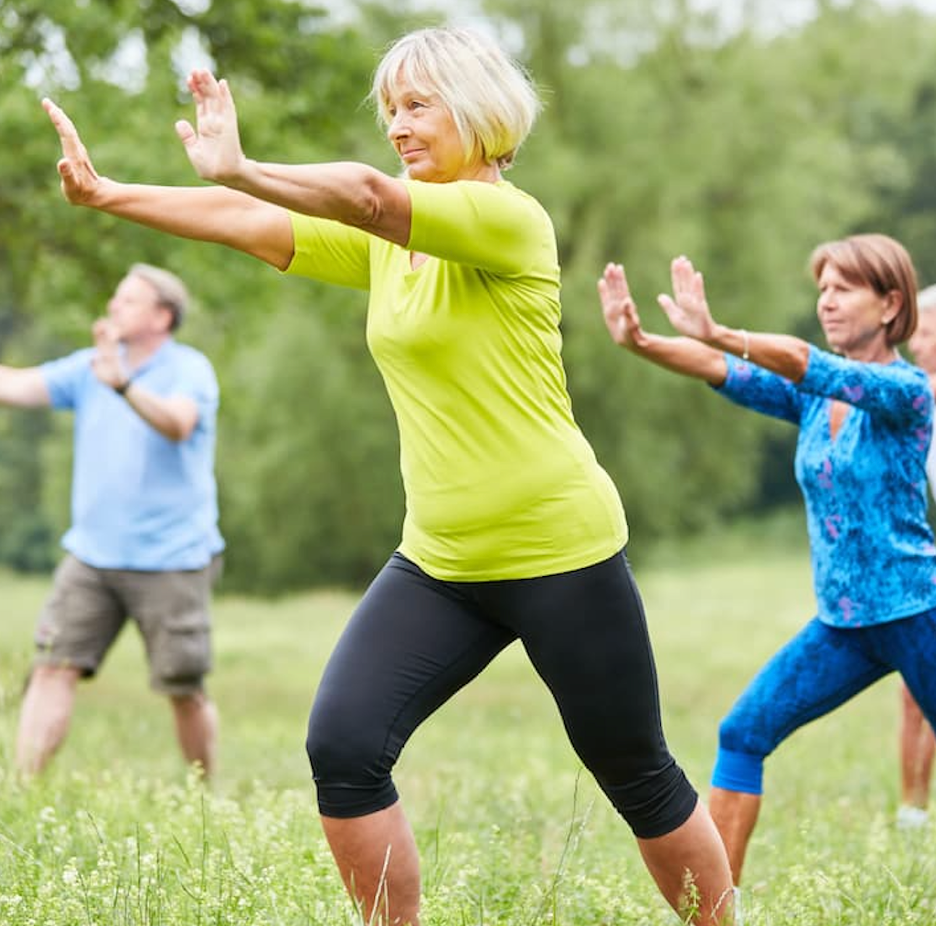Physiotherapy, Qi Gong Improves Range of Motion, Muscle Strength in Patients With Fibromyalgia
Compared with the control group, patients in the exercise for wellbeing (Qi Gong) and physiotherapy groups reported statistically significant improvements at week 5 in joint range of movement, muscle strength, spirometry, and quality of life.
Both active exercise physiotherapy and exercise for wellbeing (Qi Gong) programs proved effective for improving upper and lower limb range of movement and muscle strength, which in turn improved quality of life, in a cohort of women with fibromyalgia, according to a study in Journal of Clinical Medicine.1
Image Credit: Adobe Stock/Robert Kneschke

“Pharmacological treatment has produced meaningful improvement in 30% to 50% of patients,” investigators stated. “[However], the management of fibromyalgia can also include non-pharmacological treatments such as physiotherapy and psychological interventions, as well as socio-educational measures. These management approaches have shown improvements on physical, psychological, and social quality of life.”
Exercise for wellbeing, a Traditional Chinese Medicine technique, combines meditation, movement, and breathing to improve circulation and the immune system while enhancing the flow of the body’s energy, or Qi.2 Physiotherapy techniques include stretching and physical exercise.
In the assessor-blind, controlled trial, investigators sought to compare the efficacy of these programs in terms of improving muscle strength, range of motion, quality of life, and respiratory capacity in this patient population. Eligible patients were women, aged 30 to 65 years, with a clinical fibromyalgia diagnosis according to the American College of Rheumatology Diagnostic Criteria for Fibromyalgia.
Data collected included sociodemographic information and outcome measures. The primary outcomes were joint range of movement and muscle strength. Secondary outcomes included respiratory capacity (spirometry parameters) and quality of life, which was evaluated through the Spanish Fibromyalgia Impact Questionnaire (S-FIQ).
One hundred forty-one women with fibromyalgia were entered into the 6-week trial, with 93 patients completing the intervention and all measurements (mean age 52.24 years). Participants were randomized to either a physiotherapy exercise cohort (n = 33), an exercise for wellbeing cohort (n = 31), or a control group (n = 29). Both exercise groups completed 45-minute sessions twice a week, on alternate days, for 4 weeks. A baseline assessment was conducted at week 0 and a post-intervention evaluation was performed at week 5.
Compared with the control group, patients in the exercise for wellbeing and physiotherapy groups reported statistically significant improvements at week 5 in joint range of movement (P = 0.004), muscle strength, (P = 0.003), spirometry (P = 0.039), and quality of life (P = 0.002). Although the physiotherapy group showed better performance in sample terms, there were no significant differences between intervention groups. A small, not statistically significant improvement was reported in the control group.
Changes in spirometry parameters were linked to changes in quality of life, muscle strength, and joint range of movement. The physiotherapy and exercise for wellbeing cohorts generally performed much better when compared with controls in all primary outcome measures except for spirometry parameters.
The difficulty of learning the Qi Gong exercises may have limited the study. To mitigate this, investigators described the key aspects of the practice, such as breath control and body posture, prior to intervention initiation. Further, the intervention period may have been too short to achieve the expected benefits. However, a longer intervention duration may have negatively impacted treatment adherence. A longer follow-up period and a larger sample size may have allowed for a better impression of the overall treatment effects.
Although the S-FIQ included important factors such as fatigue and pain, only the total score was evaluated. Investigators noted that analyzing these items separately may be helpful in determining the impact of these exercise programs on fibromyalgia symptoms.
References
- Rodríguez-Mansilla J, Mejías-Gil A, Garrido-Ardila EM, Jiménez-Palomares M, Montanero-Fernández J, González-López-Arza MV. Effects of an Exercise for Well-Being and Physical Training Programme on Muscle Strength, Range of Movement, Respiratory Capacity and Quality of Life in Women with Fibromyalgia: A Randomized Controlled Trial. J Clin Med. 2023;12(3):774. Published 2023 Jan 18. doi:10.3390/jcm12030774
- WHO Strategy on Traditional Medicine 2002–2005; World Health Organization: Geneva, Switzerland, 2002; (WHO/EDM/TRM/2002.1)